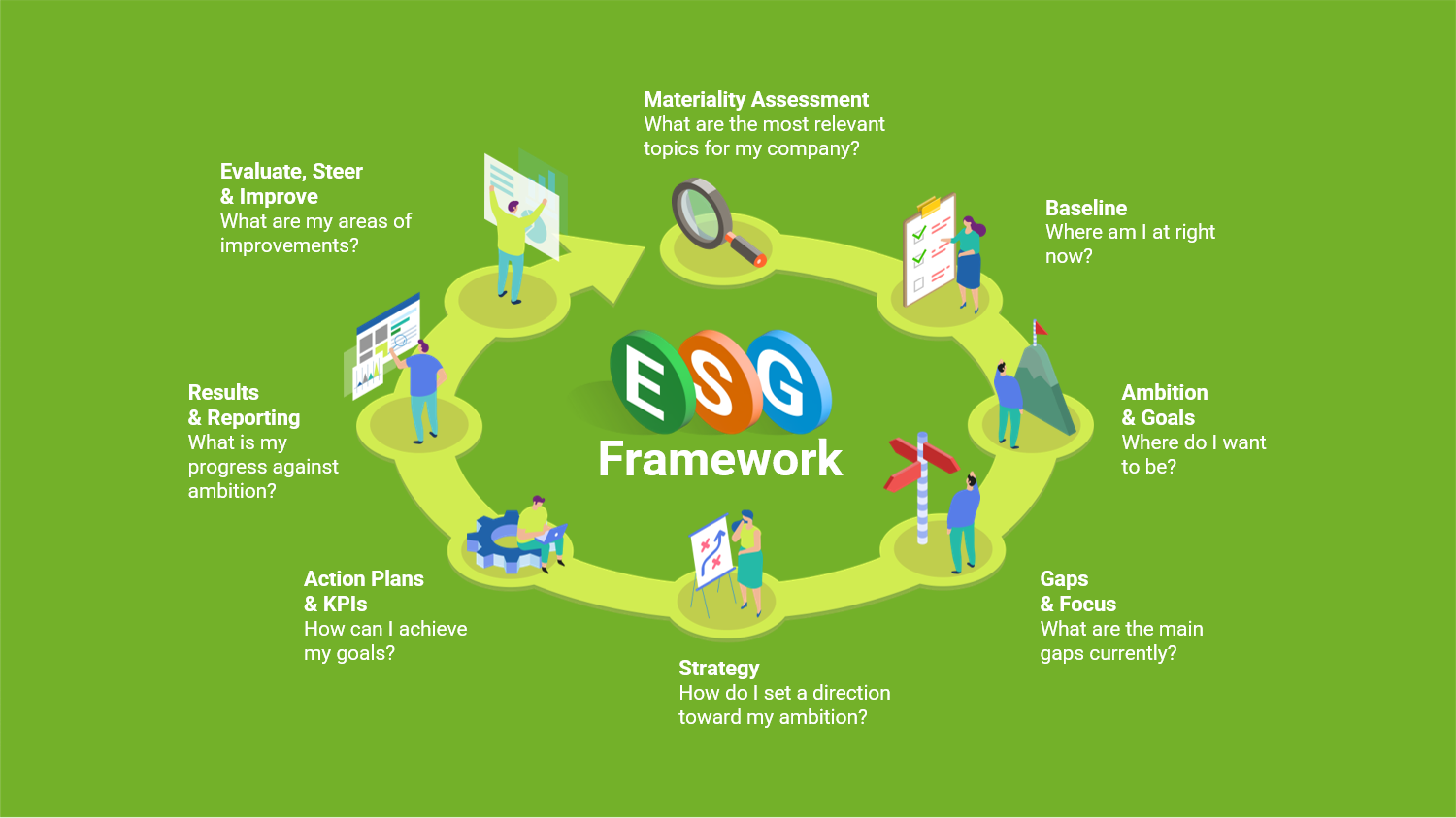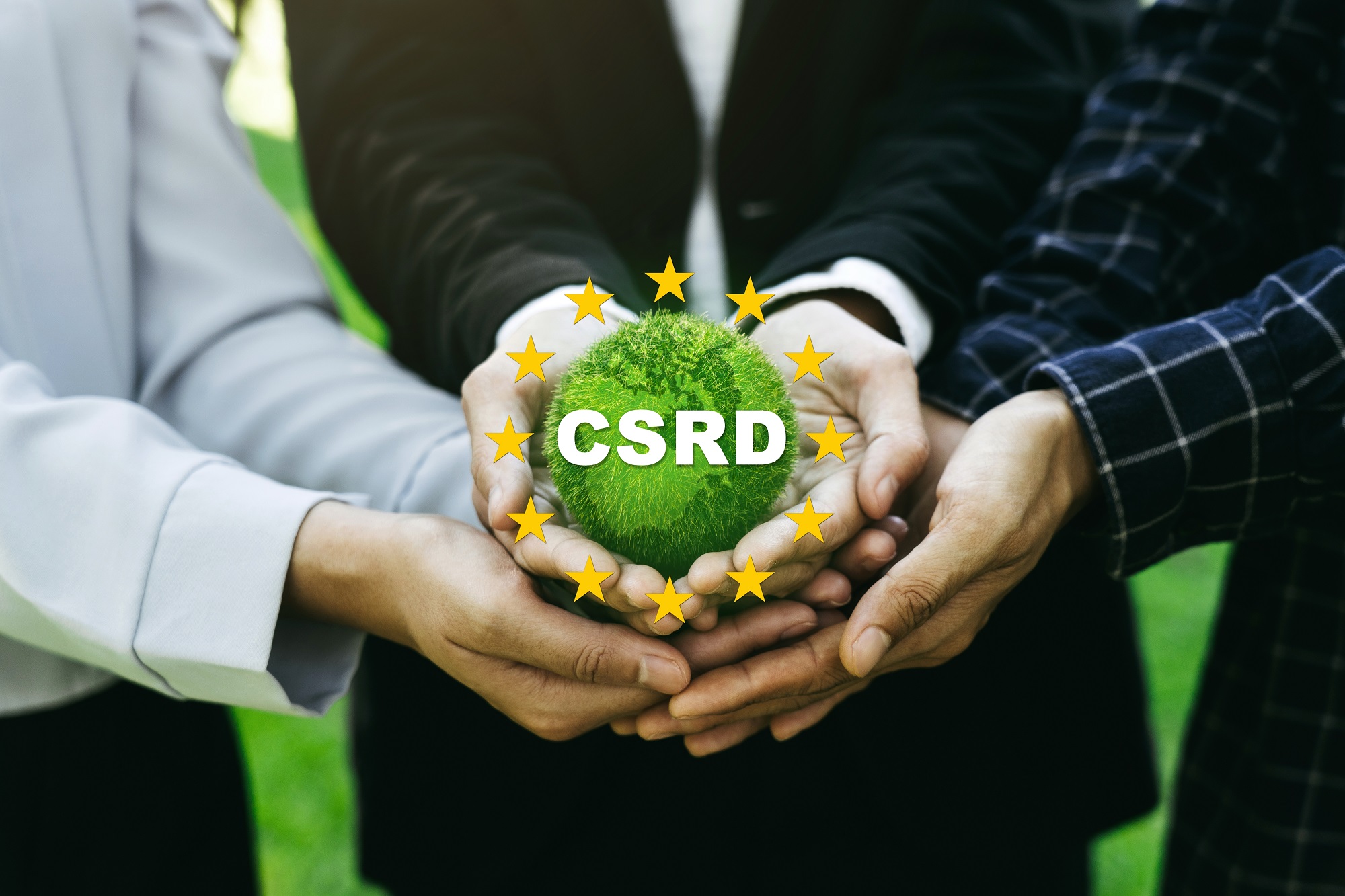ESG Phase 1: materiality analysis and stakeholder validation
Sustainability, also known as Environment, Social & Governance (ESG), is growing in importance. Society requires companies to take responsibility for sustainability, corporate social responsibility and transparent governance. Where to start? Baker Tilly can help you with this by drawing up an ESG framework . Phase 1 of the ESG framework starts with the materiality analysis. This analysis is the basis for the next steps in the framework: the starting point for your organisation’s sustainability strategy and therefore also for your sustainability report.
ESG framework
The materiality analysis is Step 1 in the ESG framework developed by Baker Tilly . In total there are four phases, divided into eight steps. Based on these phases, we work towards an integrated strategy and your sustainability report, one step at a time.
The materiality analysis includes an overview of an organisation’s sustainability themes. Based on a multi-stakeholder analysis, it reveals which themes are important to your stakeholders and those themes that are your organisation’s highest priority.
The materiality analysis helps you to create a clear foundation for your sustainability strategy, one which takes your stakeholders’ expectations into account. It ensures a clear focus for your strategy. It is a practical tool to periodically monitor your strategy. Finally, it helps you to communicate about the sustainability themes that are important to your organisation.
Why start with a materiality analysis?
As of financial year 2025, all large entities, regardless of whether they are listed or not, will be obliged to report annually on their sustainability policies and performance. The materiality analysis is the foundation for your strategy as well as your sustainability report too.
The materiality analysis developed by Baker Tilly is based on the standards set out in the Corporate Sustainability Reporting Directive (CSRD), and therefore helps you to comply with future laws and regulations.
Baker Tilly developed a unique tool for preparing the analysis, one that we can use to support you when preparing your materiality matrix. This matrix shows you which topics are most relevant to your organisation based on their impact or financial materiality.
How do we set up a materiality matrix?
Every analysis starts with mapping your value chain and the key stakeholders inside and outside your organisation. All sustainability themes are then assessed through this lens.
This is done from two different points of view:
1. From the inside out – impact materiality
This involves your organisation’s potential or actual impact, positive or negative, on people, governance and the environment. Examples of this include damage to biodiversity, human rights violations or, a positive contribution, like solving global food problems.
2. From the outside in – financial materiality
These are the key sustainability-related risks and opportunities that affect your organisation, such as water and drought damage, commodity shortages, reputational risks or carbon taxes.
Stakeholder validation
To ascertain whether you have identified the right material topics, it is important to assess them together with your stakeholders. They could be your workforce, clients, suppliers, financiers and local residents . But equally they could be the media or society in general.
Baker Tilly has developed a tool to carry out a stakeholder validation analyses using the materiality matrix. With this method you can ask your stakeholders in an interactive way how they rate the matrix and which topics they consider important for your organisation.







